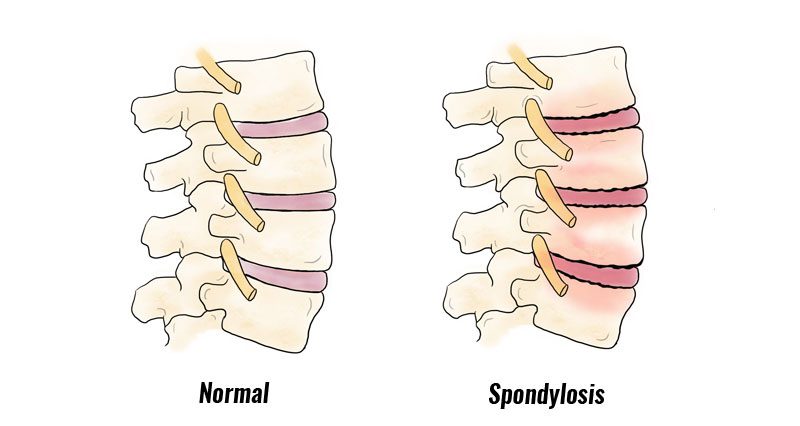Spondylosis Lumbar
Even in healthy individuals, the cartilage (discs), joints, and bones in the lower back slowly deteriorate over the years due to normal wear and tear on the body. This age-related condition is called lumbar spondylosis. It’s also frequently called arthritis of the lower back and results in chronic lower back pain that worsens with age and increases with movement. When this condition occurs in the neck, it’s called cervical spondylosis. Over the years, the discs in the spine begin to break down, lose fluid, and become stiff. Again, this is a normal part of aging. Unfortunately, some of the side effects of these changes can cause back pain and stiffness. These include bone spurs that exert force on the lower back and cause spine pain; ligament stiffening, which affects mobility and causes back pain; herniated or bulging discs, which exert pressure on nerves and the spinal cord; and dehydrated discs, which leads to bone-on-bone contact that contributes to lower back pain.

SYMPTOMS OF LUMBAR SPONDYLOSIS
As with most spinal problems, lumbar spondylosis causes back pain and stiffness. It also may cause:
- Muscle spasms in your lower back
- Grinding or popping sensations when you sit or stand up
- Numbness in the lower back and feet, and toes
- Pain in the buttocks
- Sciatica (leg pain.)
LUMBAR SPONDYLOSIS TREATMENT OPTIONS
Fortunately, lumbar spondylosis often can be treated without surgery. Medical treatment options include pain relievers, muscle relaxants, anti-inflammatory medications, and steroid injections. Physical therapy and hot- and cold therapy are also helpful in alleviating pain. Lifestyle changes including regular low-impact exercise (such as walking) and losing weight to reduce strain on the lower back are also often helpful. When non-invasive treatment options aren’t effective, your back pain doctor will most likely discuss surgical options that may provide relief.
